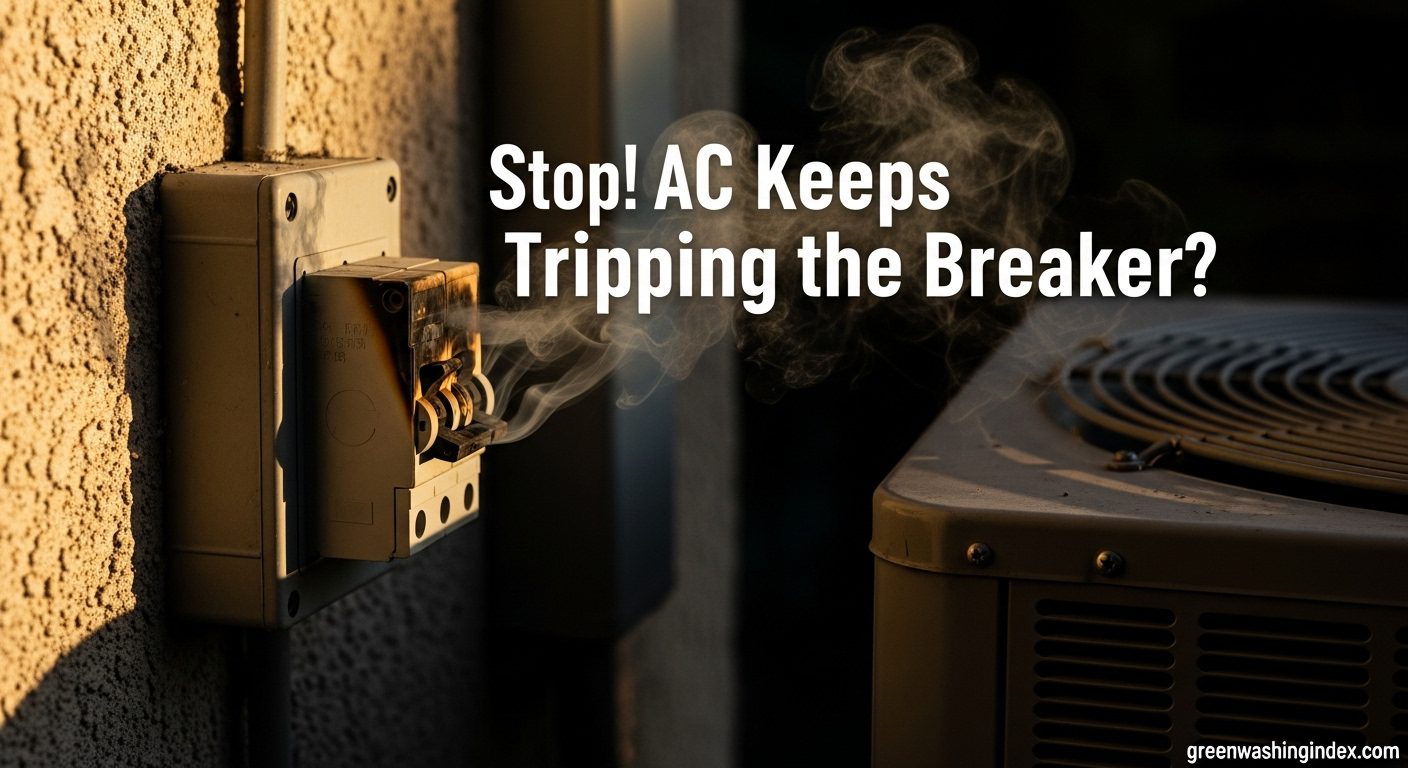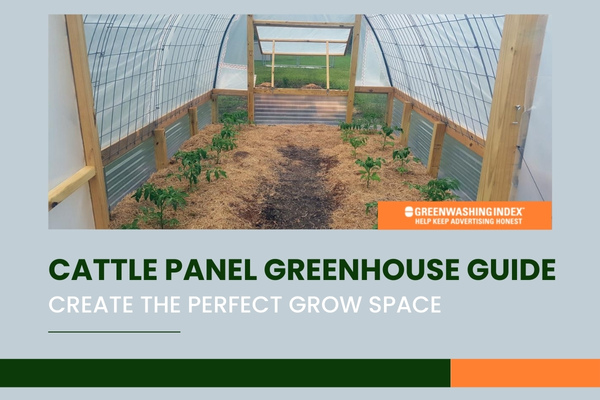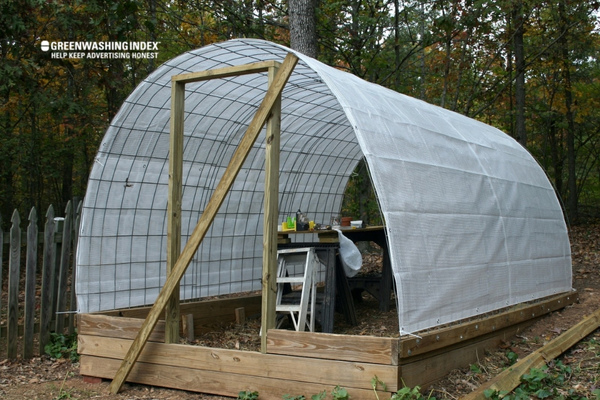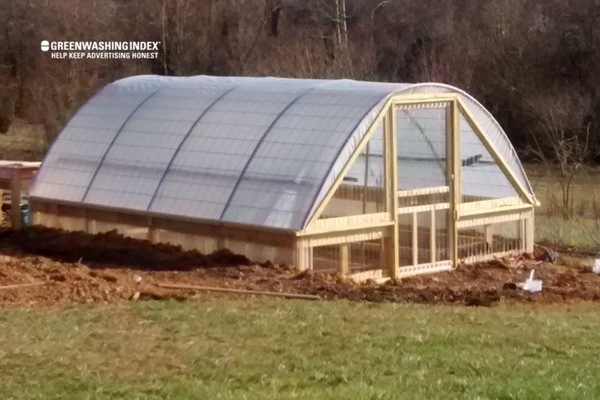

Are you dreaming of a lush garden oasis that’s easy on the wallet? I’ll let you in on a little secret: the cattle panel greenhouse is where it’s at. Imagine walking into your own slice of a thriving, green haven, knowing you built it yourself! This isn’t just any gardening fad; it’s an affordable, durable solution that any green thumb can craft.
Building the perfect cattle panel greenhouse isn’t rocket science; in fact, I promise it’s easier than you think. Start with solid base frames—wood works wonders for a foundation—bend those sturdy cattle panels into beautiful arches for your structure, cover them with clear plastic sheeting to let in all that sunshine, and there you have it—a cozy home for your plants to thrive year-round. You don’t need expensive gear or professional help, just some basic tools and the willingness to get your hands dirty.
What You’ll Discover Here
When it comes to gardening, I have always looked for ways to extend the growing season. And that’s where a cattle panel greenhouse comes into play. It’s a smart and sturdy choice for folks who want to grow plants year-round without breaking the bank. Let me dive into why a cattle panel greenhouse might just be the perfect project for you.

Now, you might wonder what makes a cattle panel greenhouse so special. Well, here are some of its benefits:
So, whether you’re new to gardening or an old hand looking for an upgrade, consider this hearty structure. It could be just what your green thumb needs.
Now, before you grab your gloves and get going, let’s talk about key features. A top-notch cattle panel greenhouse should have the following:
Remember these points when planning; they will make all the difference in building a functional cattle panel greenhouse that lasts through seasons and brings joy with every sprout and bloom!
Building a cattle panel greenhouse is a fun and rewarding project that helps me extend the growing season of my garden. Let me guide you through choosing the right materials to ensure your DIY greenhouse stands up to the task.
When I set out to select cattle panels for my greenhouse, I keep a few important factors in mind — durability, size, and price. Here’s how I go about it:
Remember, picking stronger and appropriately sized cattle panels might cost more initially, but save money in repairs down the line.
Once I have my cattle panels decided upon, it’s time for me to gather other materials needed for this DIY project:
With these materials picked out and prepped, you’re on your way toward creating your own little plant haven — a perfectly crafted cattle panel greenhouse!
Building a cattle panel greenhouse is a rewarding project for anyone who loves gardening. It gives you an all-year place to grow your plants. I want to guide you through making one, step by step.

To begin with the frame:
Now, let’s attach those panels:
Doors and vents are very important:
You’ve got yourself a sturdy greenhouse that can take on different weather. The placement ensures fresh air gets in while excess heat escapes – perfect for happy plants!
It’s important this info is clear so anyone can follow these steps. Safety comes first in construction; make sure everything is secured well. Enjoy planting in your new greenhouse!
When you have a cattle panel greenhouse, keeping it in good shape is key to making sure your plants can grow all year round. Just like taking care of your car or your home, looking after your greenhouse needs some attention, too. Here’s how you can keep things running smoothly so your green thumb stays green.
Keep it Clean:
First things first, keep your greenhouse clean. This means sweeping out any leaves or dirt on the floor and wiping down surfaces to stop mold and pests from setting up shop. If you let these little critters move in, they might hurt your plants.
Check-Ups:
Just like going to the doctor for check-ups is necessary for staying healthy, giving your cattle panel greenhouse regular check-ups is just as important. Look closely at the panels and the frame of the greenhouse to make sure there’s no rust or weak spots.
Clear Plastic Coverings:
The plastic that covers the cattle panels keeps warmth in and cold out. Make sure this skin of your greenhouse has no tears or holes every once in a while – think of it as checking for cuts and scrapes on yourself.
Sometimes, bad weather or plain old wear-and-tear can cause damage to your cattle panel greenhouse. Don’t worry; it’s usually not tough to fix!
For Broken Panels:
If a cattle panel does break, replacing it should be first on your list. A broken panel can mean less support for the whole structure and maybe even a chance for damage to spread.
Plastic Tears:
Now, when you find a tear in the plastic covering, patching it up right away will save you headaches later. You could use strong, clear tape made for greenhouses or go big with replacing whole sections if needed.
Fixing problems early keeps them from getting worse over time – think of protecting your garden, like taking care of a small scrape before it gets infected.
Taking these steps seriously makes having a DIY greenhouse more joyful than stressful – happy gardening!
When I’m putting together a cattle panel greenhouse, I know the devil is in the details. To help you, here are some smart tips and tricks that will make sure you’re on the right path from the get-go.
First off, I cannot stress enough how important it is to avoid common mistakes during setup. Here’s what I have learned:
By remembering these points, you dodge common blunders that can mess up a perfectly good cattle panel greenhouse before it even has a chance to shine!
Now let’s jazz up our basic structure with some upgrades that are more than just eye candy – they’re total game-changers for functionality:
Each of these upgrades does wonders for making my cattle panel greenhouses more efficient and user-friendly over time – something every gardener loves!
Remember these essential pointers while building and upgrading: proper planning avoids common setup mistakes; layers boost cozy warmth; technological tweaks ease everyday tasks like watering & temperature adjustment; and finally, structured design elements maximize precious plant-growing space tucked inside. I promise following this approach always leads me toward creating an enviably functional haven brimming with thriving greenery under my very own cattle-panel crafted roof!
Cattle panels usually come in sizes around 16 feet long and 50 inches wide. These dimensions can vary slightly by manufacturer.
To build a greenhouse, you need a frame, which could be made of cattle panels, plastic or glass covering material, doors, vents for airflow, and sometimes a heating system, depending on your climate.
A good greenhouse design maximizes sunlight exposure, has efficient ventilation to control temperature and humidity, and is sturdy enough to withstand weather conditions. It should also be sized appropriately for its intended use.
Building my own cattle panel greenhouse was not just a fulfilling DIY project but also a smart move for my gardening passion. This type of greenhouse offers an economical and robust solution for year-round plant growth. By carefully selecting the right materials, constructing the frame securely, and ensuring I’ve got all features like doors and vents in place, I’ve made sure that my greenhouse stands sturdy against all weather conditions. Regular maintenance keeps it in shape, ensuring that this simple structure provides a warm and inviting environment for my plants to thrive.
Key Takeaway Points:

Don't let aphids, slugs, and caterpillars ruin another plant. Take back control with simple, natural methods that actually work.